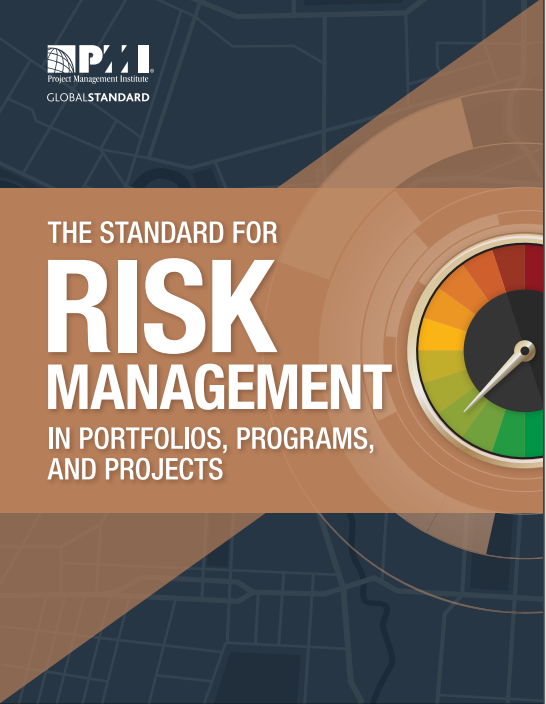The Standard for Risk Management in Portfolios, Programs, and Projects. By Project Management Institute

1
INTRODUCTION
Risk is an uncertain event or condition that, if it occurs, has a positive or negative effect on one or more objectives.
Positive risks are opportunities, while negative risks are threats.
The practice of risk management includes planning the approach, identifying and analyzing risks, response planning
and implementation, and ongoing monitoring of risks. Risk management is an essential aspect of all organizational
activities. This standard describes the application of risk management within an enterprise risk management (ERM)
context that includes the portfolio, program, and project domains. Risk management shapes the decision-making
processes across the organization and within each of the domains.
The degree to which risk management is pursued can be the difference between success and failure. PMI’s 2015
Pulse of the Profession® report found that for organizations that apply a formal risk management approach, 73% of
projects meet their objectives, 61% finish on time, and 64% are completed within the approved budget [1].
Risk management allows an organization to:
uu Anticipate and manage change,
uu Improve decision making,
uu Proactively implement typically lower-cost preventive actions instead of higher-cost reaction to issues,
uu Increase the chances to realize opportunities for the benefit of the business,
uu Generate broad awareness of uncertainty of outcomes,
uu Act upon the transformations taking place in its business environment, and
uu Support organizational agility and resilience.
Risk management also establishes iterative connections among portfolios, programs, and projects and links these
connections with ERM and organizational strateg
1.1 PURPOSE OF THIS STANDARD
This standard describes the concepts and definitions associated with risk management and highlights the essential
components of risk management for integration into the various governance layers of portfolios, programs, and
projects with the following major objectives:
uu Describe the fundamentals of risk management,
uu Support the objectives of and demonstrate the link to ERM, and
uu Apply risk management principles, as appropriate, to portfolio, program, and project domains as described in
the PMI foundational standards.
This standard fulfills a business need to provide a standard for risk management in portfolio, program, and project
management that defines the essential considerations for risk management practitioners. It expands on the knowledge
contained on risk management in the relevant sections of the PMI foundational standards.
This standard can be used to harmonize practices between ERM and portfolio, program, and project management,
regardless of the life cycle approach used.
PMI is committed to providing global standards that are widely recognized and consistently applied by organizations
as well as practitioners. Increasingly, organizations are requiring practitioners to use risk management practices in
portfolio, program, and project management as an integral part of their ERM framework.
1.2 APPROACH OF THIS STANDARD
This standard presents the what and why of risk management. The following concepts are elaborated in this
standard:
uu Purpose and benefits of risk management;
uu Principles and concepts of risk management in portfolios, programs, and projects;
uu Risk management life cycle in portfolios, programs, and projects; and
uu Integration of risk management within portfolios, programs, and projects.




